often i prefer techniqueA because i find it physically/visually easier to maintain the exact stropping angle ymmv.
just had another thought
why techniqueA is so 2140 advantageous.
with techniqueB, you could, but you probably DON'T, use a black Sharpie marker on the blade's bevel and then check after each stroke on the leather(!), if you've hit the bevel at the perfect stropping angle. (And on leather, what
is the perfect stropping angle anyway??) And even if you used the Sharpie trick, that would be "useless" because you can check
only after you're done with the stroke; you turn the blade, look at the stropped bevel side, assess the needed angle adjustment, turn the blade back towards the leather, do the angle adjustment in your wrist (How good is your wrist muscle memory?), and continue with the leather stropping .. not knowing if your stropping angle is perfect by now (is it really?), until you check again once you feel like checking again. the softer the leather, the more forgiving is techniqueB, if you don't strop at the perfect angle (which imho should match the bevel angle); but a softer leather also rounds off shoulders and apex more and more with every added stropping session, from nano-convexing to micro-convexing. the harder the stropping surface (extreme: 302UF, or a 3000grit+ whetstone), the more difficult/impossible it becomes to get the stropping angle right .. especially if you do the conventional 'balancing strokes', i.e. 1 single sweeping stroke to cover the entire length of the bevel. To circumvent this physical coordinative difficulty, sharpening pro's like @Michael_Christy don't do balancing strokes but strop the blade in 1cm-sections, always checking/adjusting the perfect angle before proceeding to the next 1cm-section (
 NORTHWEST_KNIFE_GUY
NORTHWEST_KNIFE_GUY
does a
similar wood stropping technique, i.e. with no balancing strokes on wood). i like that, i sometimes strop like the too two.
with techniqueA, you get to use the black Sharpie marker (because who cares if your wood staff gets blacker), which allows you to
see and
adjust in
real-time the stropping angle to the perfect stropping angle (matching the bevel angle) because the bevel side is facing upwards: as you strike the bevel with the wood staff, you
immediately see whether the Sharpie marking gets taken away or not, and can adjust your right arm/elbow height
during the stroke, and then fix that right arm/elbow height. interestingly, even after the black marker is gone, it is still possible to see if you keep stropping at the perfectly adjusted angle: my wood staff is slightly(!) overloaded with compound, and stropping at a steeper than the bevel angle would leave compound residues in the middle of the bevel height. Clearly, if i strike the bevel with my wood staff and the bevel isn't shiny clean after the one stroke, then it means that i didn't hit the perfect angle (and that i should re-strike the bevel at an
on-the-fly adjusted stropping angle, until the bevel is shiny clean, free from compound residues). similarly to @Michael_Christy's approach, the best way to apply techniqueA is by proceeding in 1cm sections: start at the heel area, do 1-2
straight strokes (seeing that your stroke matched the bevel angle and wiped the bevel section clean), then move 1cm further to the next blade section, do 1-2 straight strokes there, move another 1cm, do 1-2 strokes, etc, until you've reached the tip area. each stroke works only 1inch of the blade length at a time. why 1inch? Because that's the width of the wood staff, and your strokes are straight (i.e. in direction of the wood staff's longitudinal axis). you shouldn't try sweeping 'balancing strokes' which cover the entire blade length with a single stroke; well, you could try!, and then learn how difficult a balancing stroke with techniqueA is, and you don't gain anything with it.
I hope i could get the point across in this post. In summary, techniqueB is blind (because the bevel is
down, facing the leather), whereas techniqueA is visual: the bevel is
up,
What You See Is What You Get.
Instant visual feedback allowing for instant arm/elbow/manual correction 

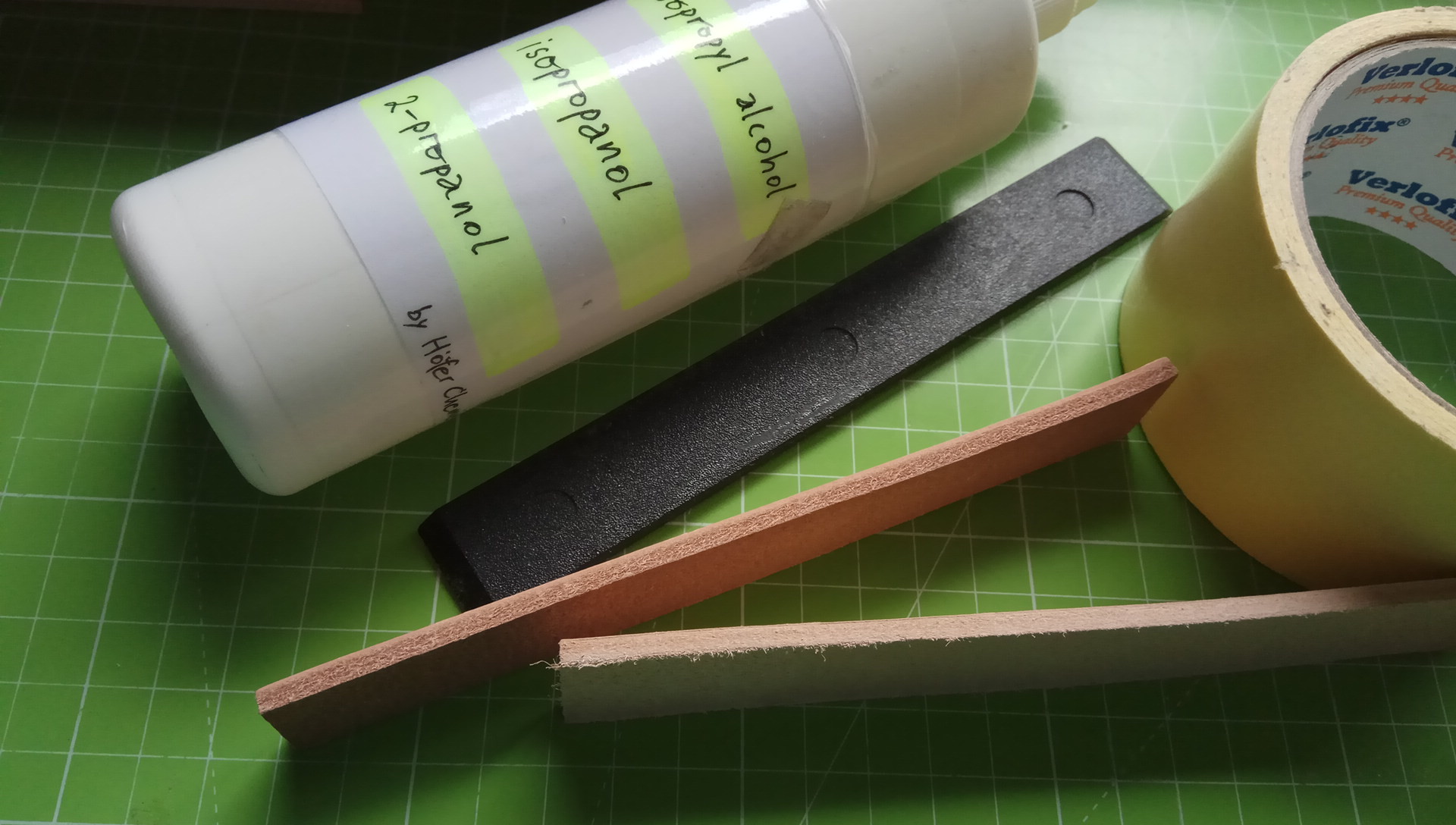

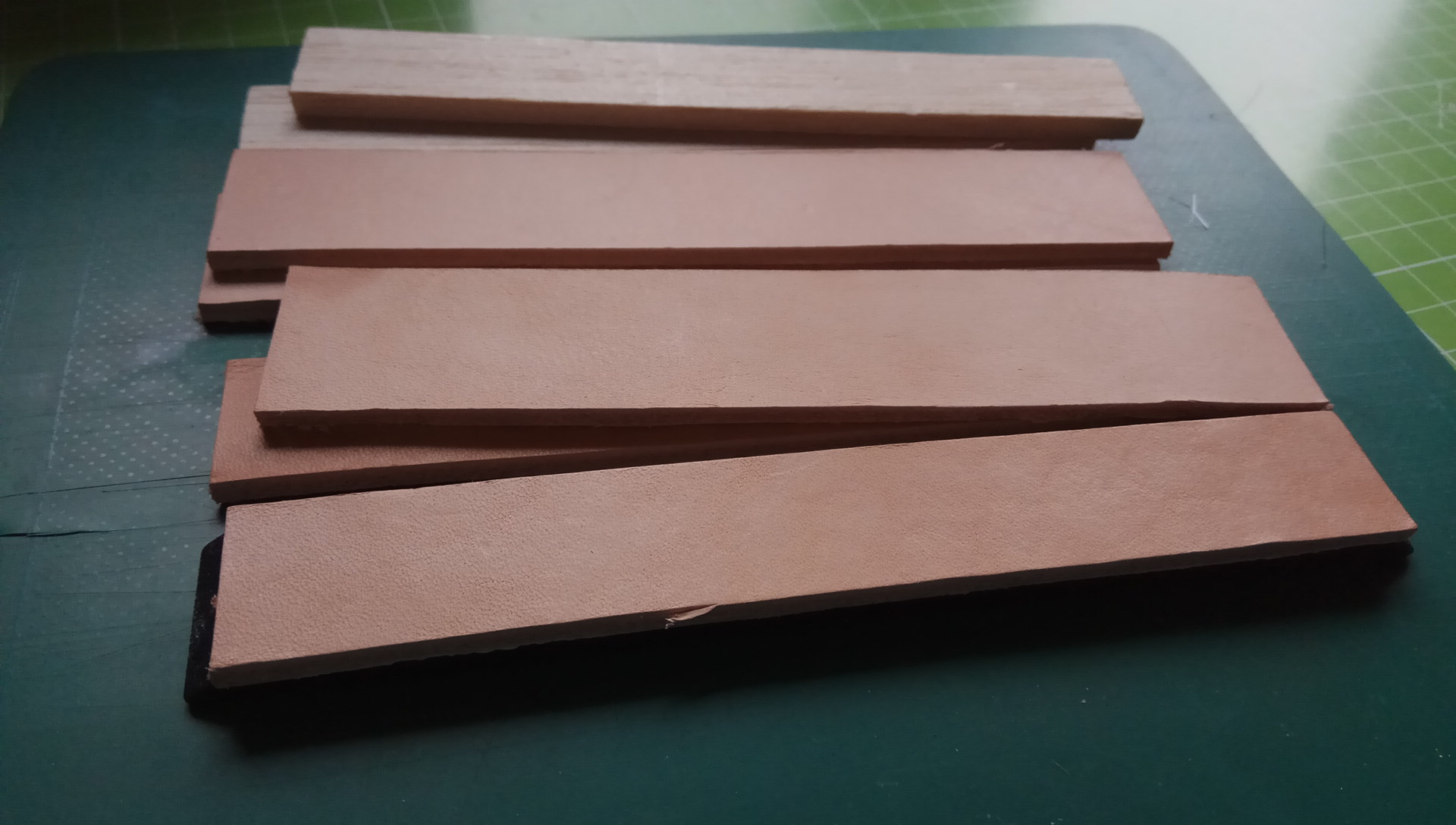
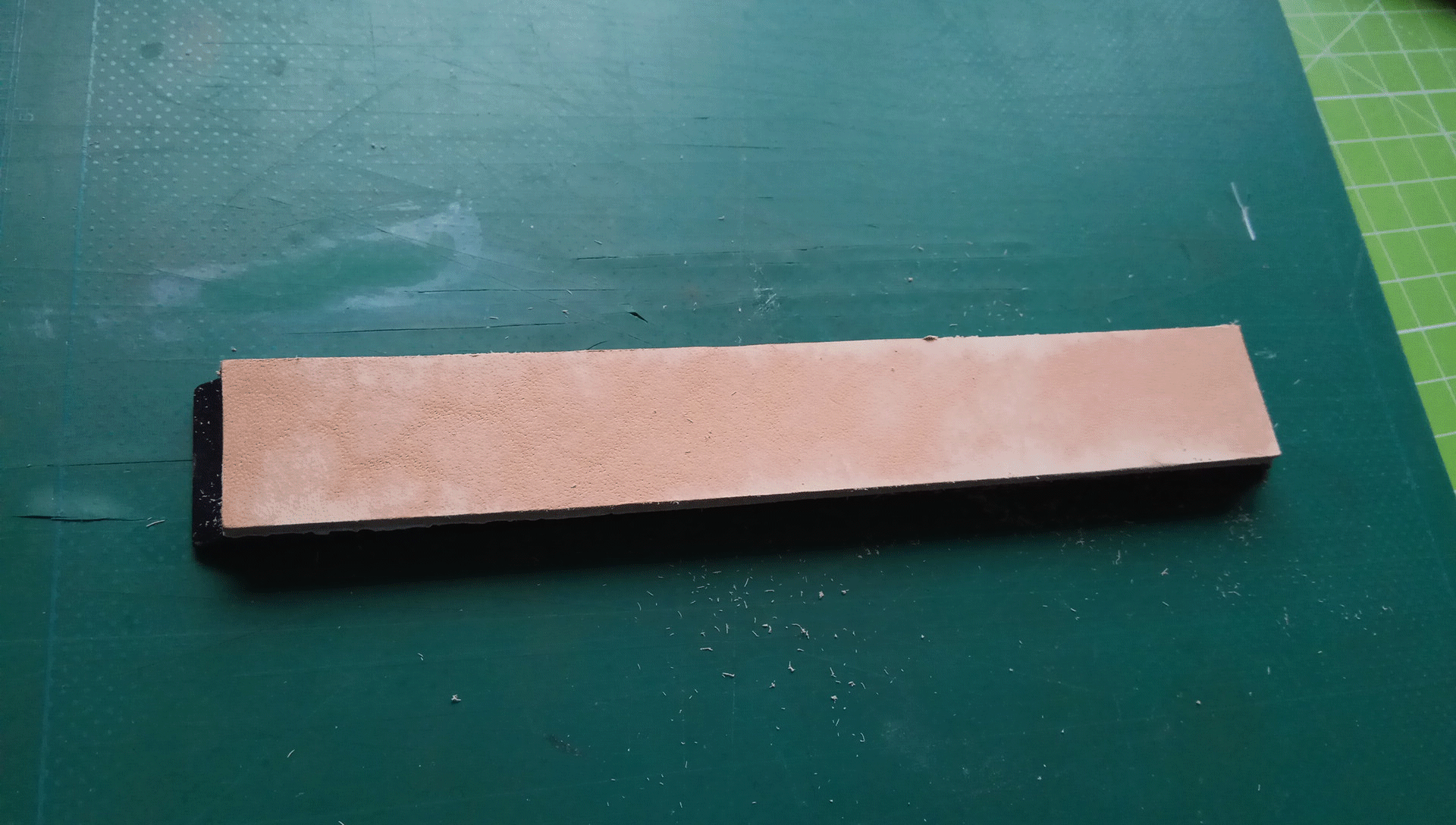
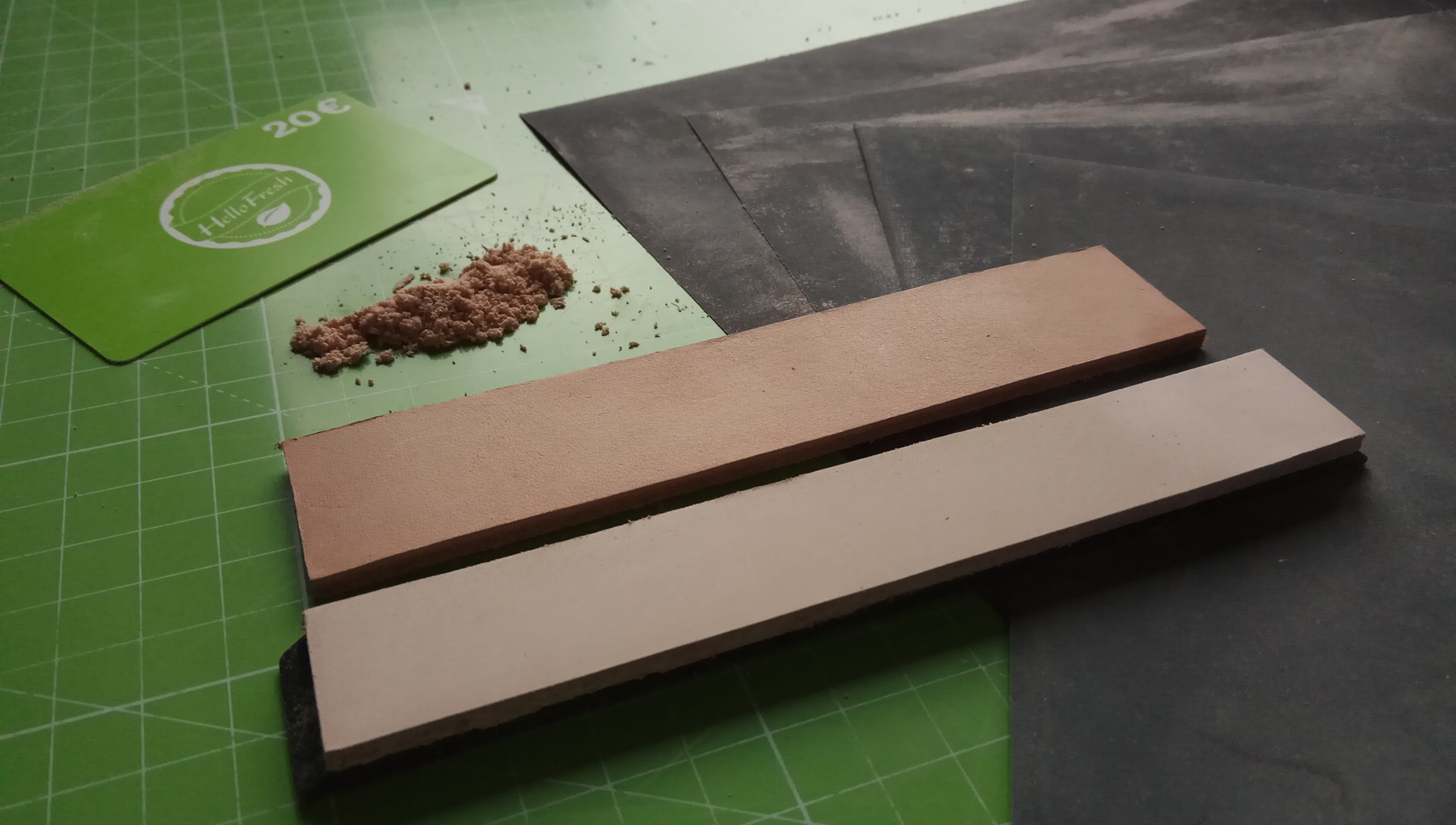
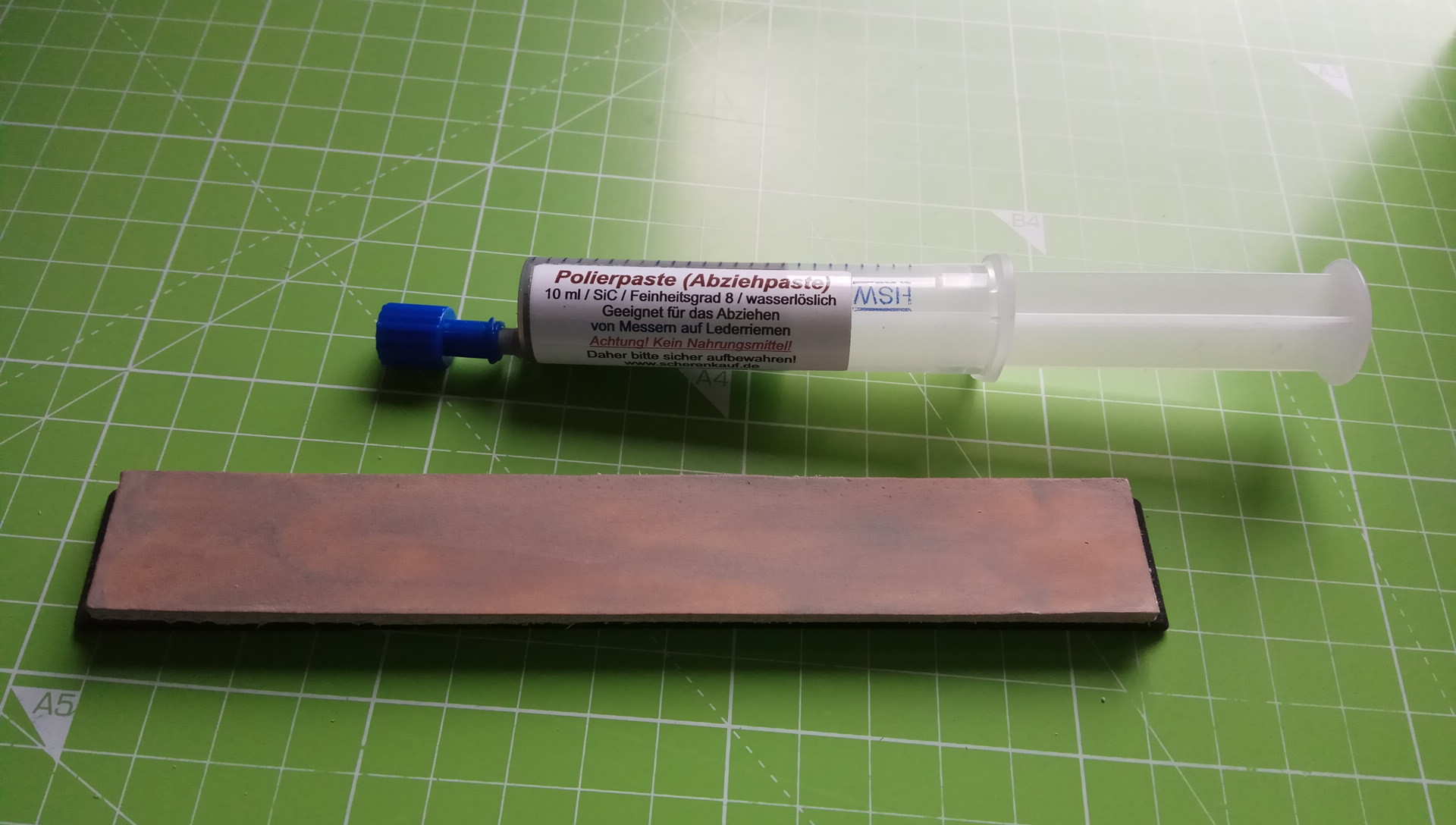
 to those who do leather stropping.
to those who do leather stropping.